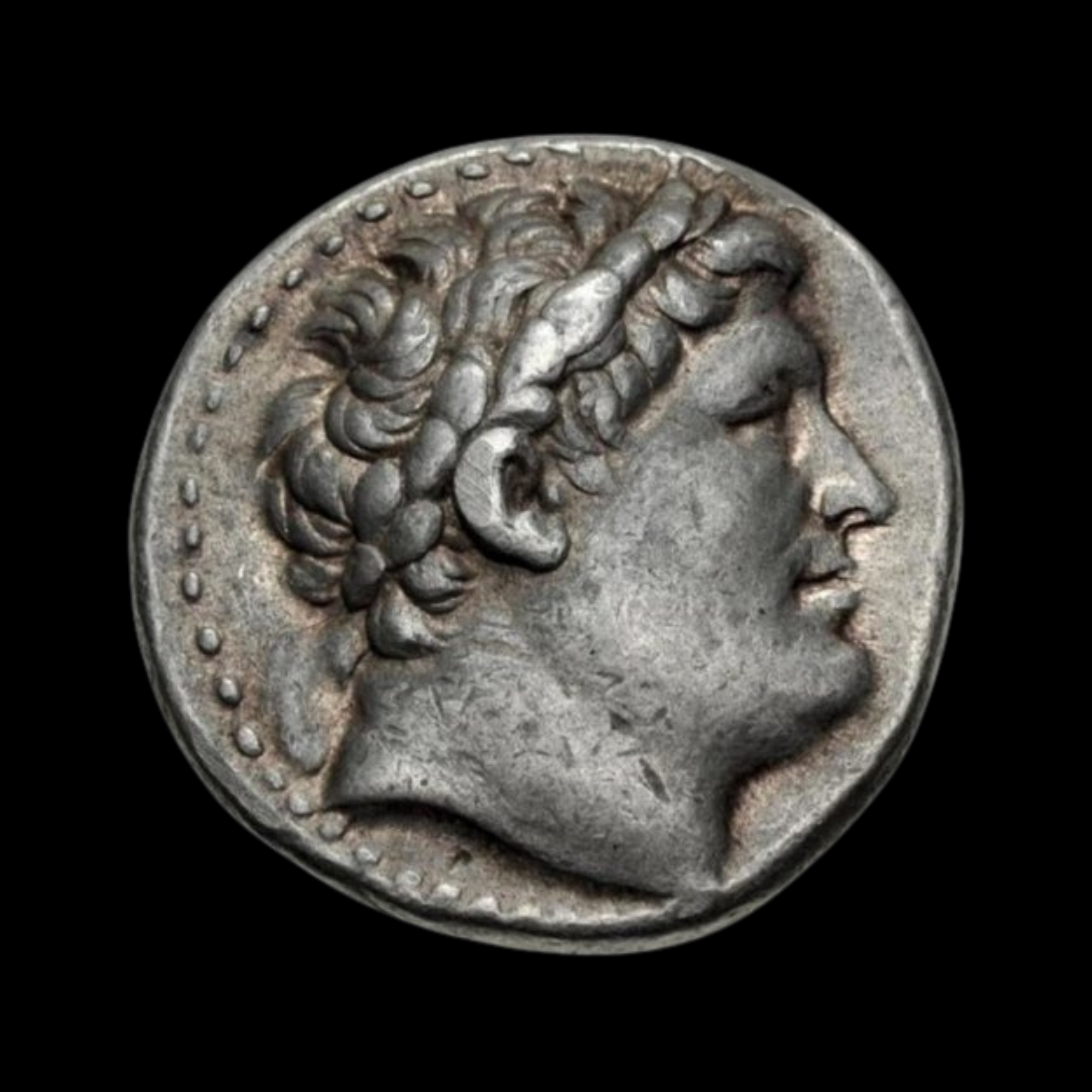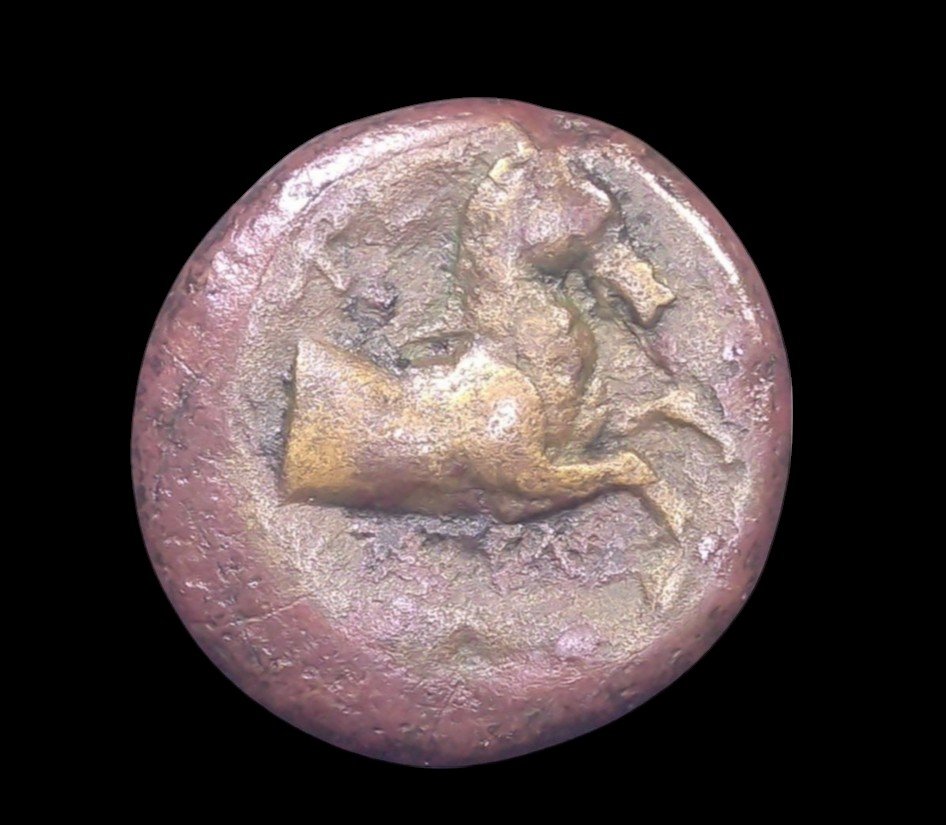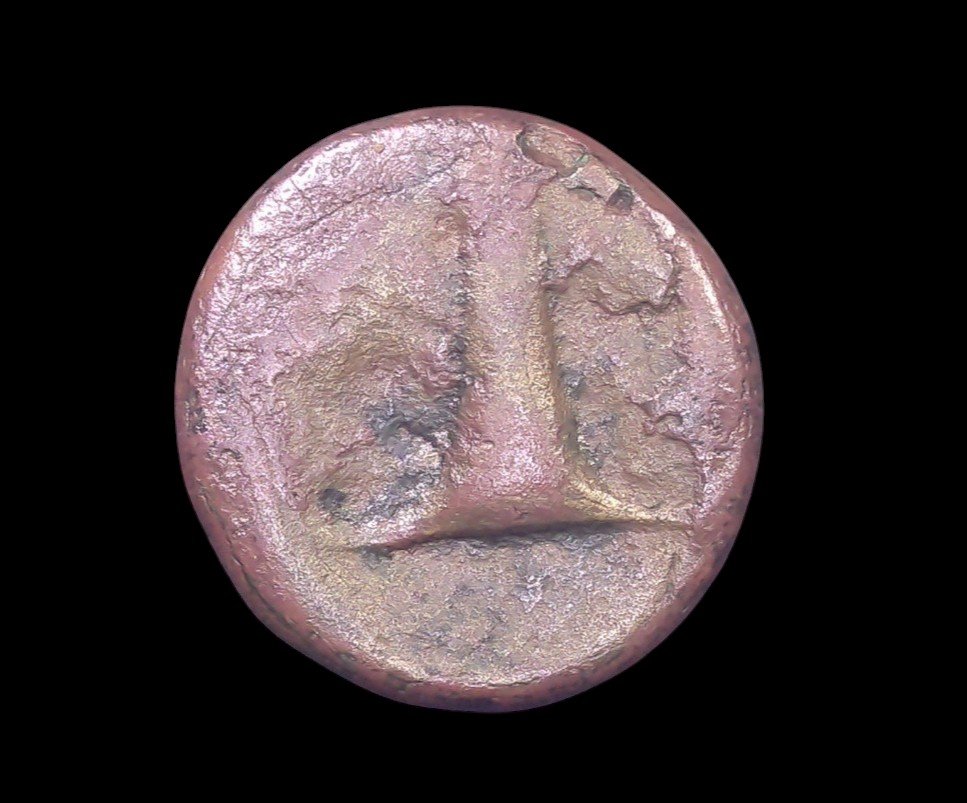 Image 1 of 4
Image 1 of 4

 Image 2 of 4
Image 2 of 4

 Image 3 of 4
Image 3 of 4

 Image 4 of 4
Image 4 of 4





Ancient Silver Didrachm from the Seleucid Empire: Demetrius II, First Reign at Tyre Mint (about 2,165 years ago)
This silver didrachm was minted in Tyre (modern-day Lebanon) between 141–140 BC, during the first reign of Demetrius II Nicator, ruler of the Seleucid Empire—a Hellenistic successor state to Alexander the Great’s dominion. Struck at a time of political unrest and external threats from the Parthians and internal rivals, this coin served as a tool of royal propaganda, affirming the young king’s legitimacy. The craftsmanship reflects the enduring Greek artistic traditions transplanted across the eastern Mediterranean, even as Seleucid power began to wane.
Front side (Obverse):
Diademed head of Demetrius II facing right
Youthful yet idealized features: high cheekbones, straight nose, and a slight upward gaze
Wears the royal diadem, a signature of Hellenistic kingship
Clean, classical Greek style—echoing portraits of earlier Seleucid rulers and Alexander the Great
Back side (Reverse):
Seated figure of Herakles on a rock, holding a club and lion skin
Inscription in Greek names Demetrius as king and affirms his authority
Monograms and control marks flanking Herakles indicate the specific issue from Tyre
A confident yet restrained composition, aligning divine strength with royal power
Technical Details
Composition: Silver (AR)
Denomination & Weight: Didrachm; 7.04 grams
Mint & Date: Tyre (modern Lebanon), 141–140 BC
References: SC 2009.4a; HGC 9, 1052; BMC 11.4, Tyre
Certification: Not slabbed; sharp strike with light cabinet tone and full legend clarity
Historical Significance
This didrachm represents the Seleucid Empire at a crossroads: still powerful, yet increasingly challenged by both internal dynastic feuds and Parthian expansion. Demetrius II’s coinage—especially from a key city like Tyre—was part of a calculated effort to project stability, Hellenistic continuity, and divine favor. The presence of Herakles on the reverse reinforces the king’s alignment with heroic strength and legitimacy through mythological lineage. Today, coins like this are prized for their artistry and for illuminating the complex, often turbulent transitions of power in the post-Alexandrian world.
This silver didrachm was minted in Tyre (modern-day Lebanon) between 141–140 BC, during the first reign of Demetrius II Nicator, ruler of the Seleucid Empire—a Hellenistic successor state to Alexander the Great’s dominion. Struck at a time of political unrest and external threats from the Parthians and internal rivals, this coin served as a tool of royal propaganda, affirming the young king’s legitimacy. The craftsmanship reflects the enduring Greek artistic traditions transplanted across the eastern Mediterranean, even as Seleucid power began to wane.
Front side (Obverse):
Diademed head of Demetrius II facing right
Youthful yet idealized features: high cheekbones, straight nose, and a slight upward gaze
Wears the royal diadem, a signature of Hellenistic kingship
Clean, classical Greek style—echoing portraits of earlier Seleucid rulers and Alexander the Great
Back side (Reverse):
Seated figure of Herakles on a rock, holding a club and lion skin
Inscription in Greek names Demetrius as king and affirms his authority
Monograms and control marks flanking Herakles indicate the specific issue from Tyre
A confident yet restrained composition, aligning divine strength with royal power
Technical Details
Composition: Silver (AR)
Denomination & Weight: Didrachm; 7.04 grams
Mint & Date: Tyre (modern Lebanon), 141–140 BC
References: SC 2009.4a; HGC 9, 1052; BMC 11.4, Tyre
Certification: Not slabbed; sharp strike with light cabinet tone and full legend clarity
Historical Significance
This didrachm represents the Seleucid Empire at a crossroads: still powerful, yet increasingly challenged by both internal dynastic feuds and Parthian expansion. Demetrius II’s coinage—especially from a key city like Tyre—was part of a calculated effort to project stability, Hellenistic continuity, and divine favor. The presence of Herakles on the reverse reinforces the king’s alignment with heroic strength and legitimacy through mythological lineage. Today, coins like this are prized for their artistry and for illuminating the complex, often turbulent transitions of power in the post-Alexandrian world.
This silver didrachm was minted in Tyre (modern-day Lebanon) between 141–140 BC, during the first reign of Demetrius II Nicator, ruler of the Seleucid Empire—a Hellenistic successor state to Alexander the Great’s dominion. Struck at a time of political unrest and external threats from the Parthians and internal rivals, this coin served as a tool of royal propaganda, affirming the young king’s legitimacy. The craftsmanship reflects the enduring Greek artistic traditions transplanted across the eastern Mediterranean, even as Seleucid power began to wane.
Front side (Obverse):
Diademed head of Demetrius II facing right
Youthful yet idealized features: high cheekbones, straight nose, and a slight upward gaze
Wears the royal diadem, a signature of Hellenistic kingship
Clean, classical Greek style—echoing portraits of earlier Seleucid rulers and Alexander the Great
Back side (Reverse):
Seated figure of Herakles on a rock, holding a club and lion skin
Inscription in Greek names Demetrius as king and affirms his authority
Monograms and control marks flanking Herakles indicate the specific issue from Tyre
A confident yet restrained composition, aligning divine strength with royal power
Technical Details
Composition: Silver (AR)
Denomination & Weight: Didrachm; 7.04 grams
Mint & Date: Tyre (modern Lebanon), 141–140 BC
References: SC 2009.4a; HGC 9, 1052; BMC 11.4, Tyre
Certification: Not slabbed; sharp strike with light cabinet tone and full legend clarity
Historical Significance
This didrachm represents the Seleucid Empire at a crossroads: still powerful, yet increasingly challenged by both internal dynastic feuds and Parthian expansion. Demetrius II’s coinage—especially from a key city like Tyre—was part of a calculated effort to project stability, Hellenistic continuity, and divine favor. The presence of Herakles on the reverse reinforces the king’s alignment with heroic strength and legitimacy through mythological lineage. Today, coins like this are prized for their artistry and for illuminating the complex, often turbulent transitions of power in the post-Alexandrian world.
You Might Also Like












